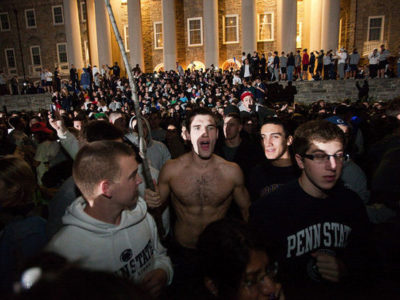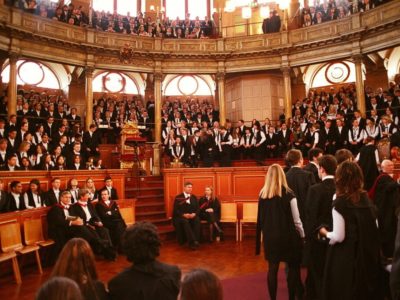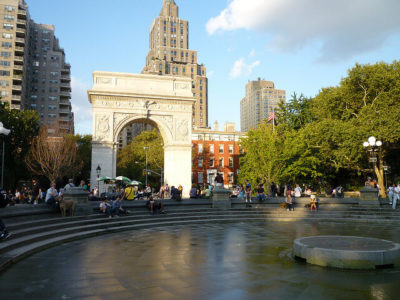Choosing a college as an emerging or aspiring writer can prove challenging. What kind of writing do you want to do? Journalism? Professional writing? Creative writing? If you settle on creative writing, did you know that there are still more choices? Bachelor of Arts or Bachelor of Fine Arts? What’s the difference? Well, every school varies, but BAs often tend to have a more generalized approach and focus on literature as well as writing, whereas BFAs in Creative Writing often have a more concentrated path. There are often more credits involved in the major as well. So, you’ve picked a BFA, but discover that they are hard to find. But don’t fret. We’ve embarked on the elusive hunt and compiled the research.
And so we present to you 10 outstanding schools across the country that build writers who may just become the next authors with scads of people lining up for their autograph.
10. Chapman University
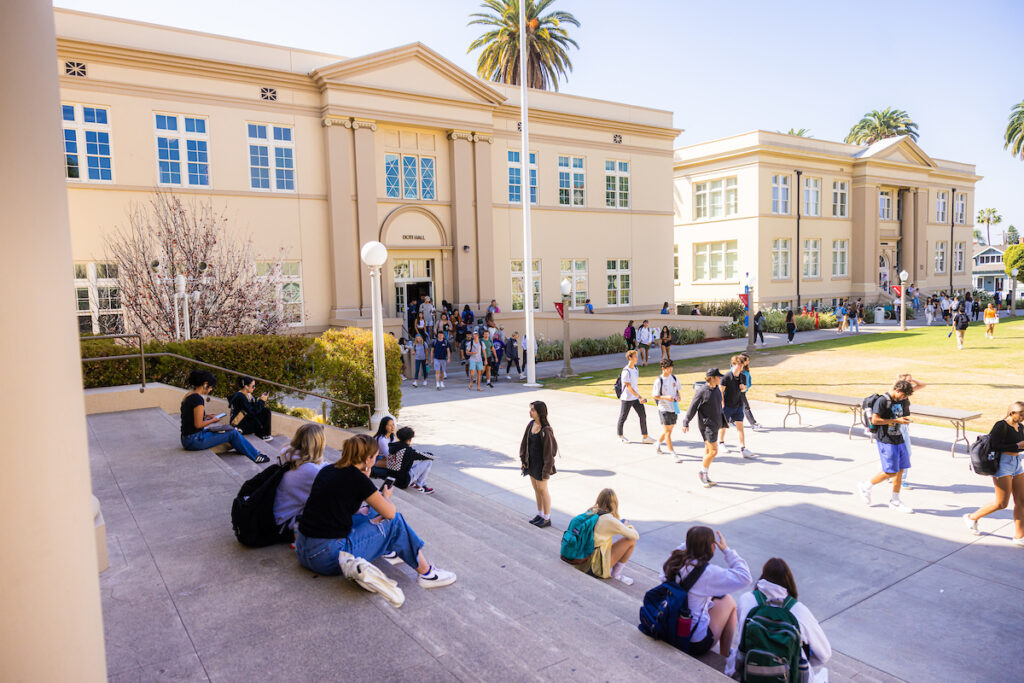
The first school on our list is Chapman University. Nestled in Orange, California, Chapman University sits on a lovely campus with palm trees in the backdrop. Chapman provides excellent opportunities for their creative young adults to become the writers they want to be. Along with traditional creative writing classes, the university also includes unique classes such as “Writing for Video Games” or “Writing the Graphic Novel.” Students can get involved in a couple different publications at Chapman, including Calliope, the literary and arts publication, and Ouroboros Magazine, the speculative story magazine. In addition, the teacher to student ratio is a solid 12:1, giving students the opportunity to be seen and helped. And the people at college can make all the difference.
“I chose the Chapman creative writing program because it was close, but I stayed there because of the people. Both the students and teachers are amazing people who have a true passion for writing. It’s a growing program as well, so I expect it to continue to rise,” Chapman University graduate Ian Reafsynder said.
The students and teachers are a special part of Chapman University, but Chapman understands the importance of bringing in expert writers as well. The John Fowles Center for Creative Writing has invited many writers to inspire and teach the Chapman creatives. The latest of them include Christopher Reid, Marino Magliani, Mikhail Shiskin and Andrei Kirkov. Chapman’s price lies on the steeper side for a BFA in Creative Writing, sitting at $62,400 for yearly tuition alone, but with all the other benefits, it is a strong contender on this list.
9. University of Evansville
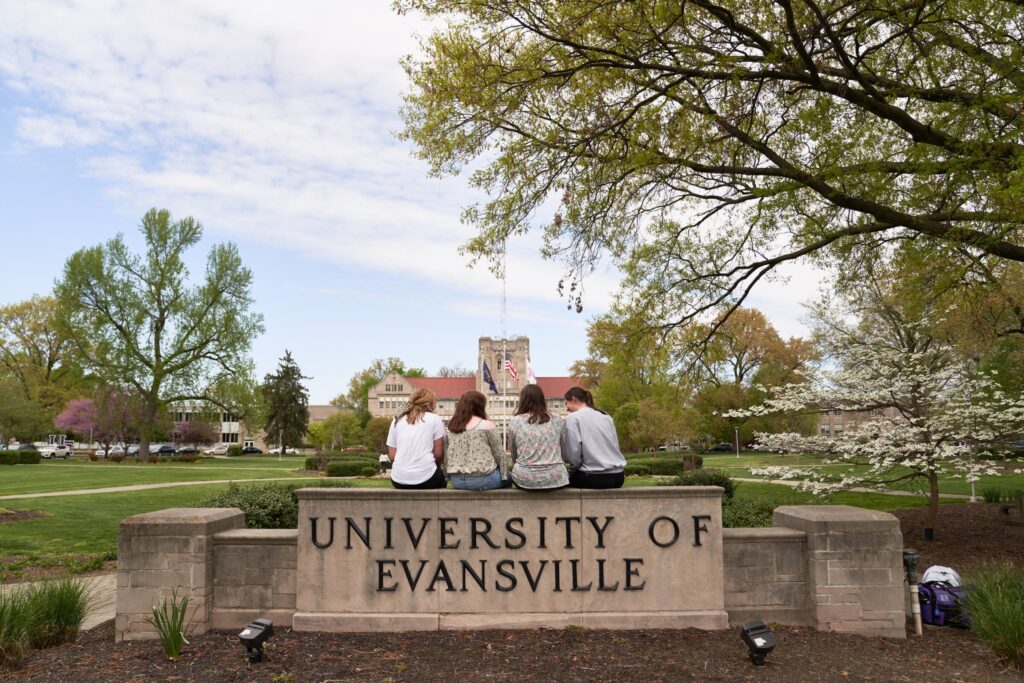
The University of Evansville is located in the Midwest in Evansville, Indiana. Even the stone architecture of the campus is enough to foster inspiration in a writer, especially if you’re one that thrives in a historical ambiance. But the University of Evansville’s appreciation for history doesn’t stop in Indiana. Evansville students get the opportunity to spend a summer or even a semester at Harlaxton College, a Victorian manor house in England. Getting to call a manor house home for a few months while growing as a writer is a wonderful opportunity that proves massively enticing for prospective students.
But this isn’t the only opportunity for students at Evansville. Students can work with publications like The Evansville Review and Measure. In addition, every year, the University of Evansville hosts what they term “UE Litfest.” The school puts on an event where they host key speakers, reserve time for the students to present their papers and distribute awards. The last key speaker that visited the University of Evansville was Vanessa Rapatz, PhD who presented, “Hollow Crowns: Shakespeare’s Histories and Netflix’s The Crown.” The University of Evansville offers students excellent ways to grow through publication experience and learning from other writers.
8. Emerson College

If you are looking for a college on the east coast for a BFA in Creative Writing, then Emerson College should certainly make that list. Located in the beautiful city of Boston, the school is set up to help writers prosper. Maybe the most unique opportunity that Emerson provides is “Pitch Slam,” where students are allowed one minute to present their pitch before a board of various editors with the hopes of every writer’s dream: publication. But this is not the only area that students can immerse themselves in publishing, for Emerson offers a myriad of ways to do so.
“I chose Emerson after researching the best schools for creative writing. They offer many opportunities for internships in publishing, and they also provide opportunities for publishing my writing— there are multiple student-run organizations and magazines that I can submit my writing to! Emerson also helps connect students to jobs after college so I feel prepared for work life after school,” Emerson freshman Heather Thorn said.
Emerson College presents a good handful of publications that students can gain experience with, whether as an author or editor. This includes EM Magazine, The Emerson Review, Concrete Literary Magazine and Your Magazine. The college also has a partnership with Penguin Random House Books where students can be mentored for a semester. This is a great choice for those seeking to explore literary magazines or publishing.
7. University of North Carolina Wilmington
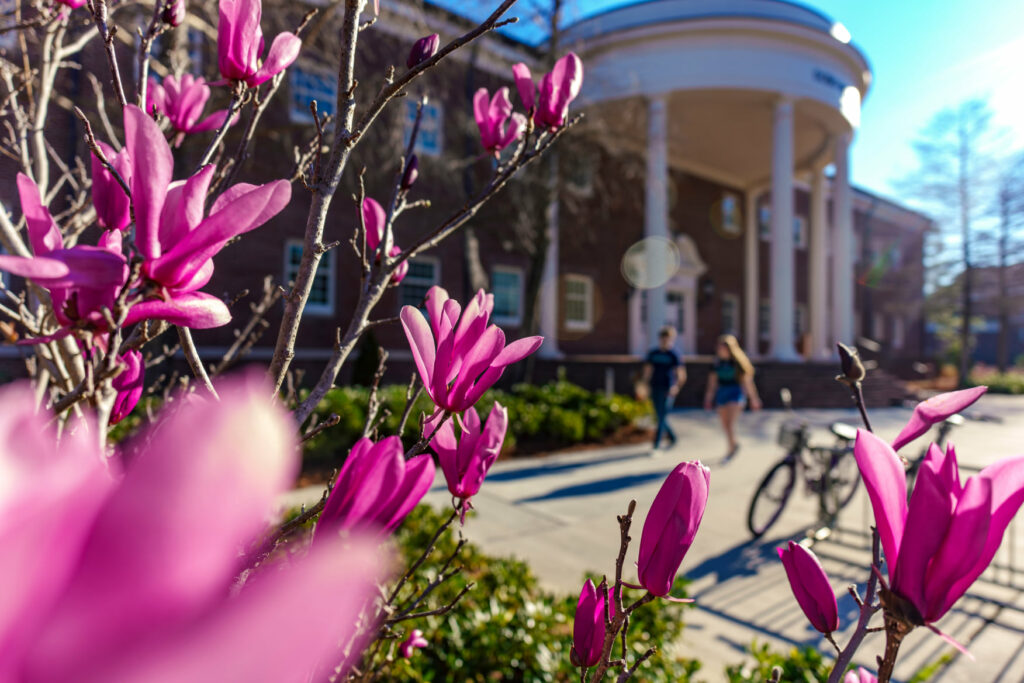
Emerson is not the only school that places great emphasis on the publishing aspect of writing. The University of North Carolina Wilmington gives students the chance to work toward an optional 15-hour certificate in publishing. The university also has a partnership with HarperCollins that allows BFA students as well as MFA students to be mentored by a prestigious and respected publishing house. In addition, UNCW’s publishing laboratory allows students to experience the publishing process hands-on from start to finish. This includes editing, designing and publishing experience. UNCW has some intensive training, but some amazing opportunities await the students.
“In our Bachelor of Fine Arts Program in Creative Writing, approximately 130 majors and 65 minors study fiction, poetry and creative nonfiction,” UNCW Bachelor of Fine Arts Program Coordinator Tim Bass said. “Majors take two levels of workshops in all three genres before moving to advanced writing in topics such as essay writing, poetry in translation, environmental writing, ghost stories, writing as activism and the prose poem. Along the way, students complete classes in editing —we have a required grammar class— along with reading for craft and research for creative writers. Electives include classes in screenwriting and the creative process. Creative writing majors also have the option of taking publishing classes that lead to the 15-credit-hour Certificate in Publishing. Our degree requires completion of 63 credit hours, making it one of the most rigorous academic majors at UNCW. Our program is one of the few in the nation to offer such a variety of writing classes in all three genres, and to offer applied learning through our Publishing Laboratory.”
Publications that students get to be involved in include Ecotone and Chautauqua. Lookout Books is also the imprint of UNCW. Books and chapbooks that students and their alumni have published through various places topple over the 200 mark. If publishing is your dream, this school is a strong contender. What’s more, it’s located in lovely North Carolina with pretty brick buildings. It has one of the lowest annual tuition fees of the schools on this list at $20,016. Whatever reason you pick for loving this school, there are several reasons why UNCW made our cut for the top ten schools for BFAs in creative writing.
6. Stephens College
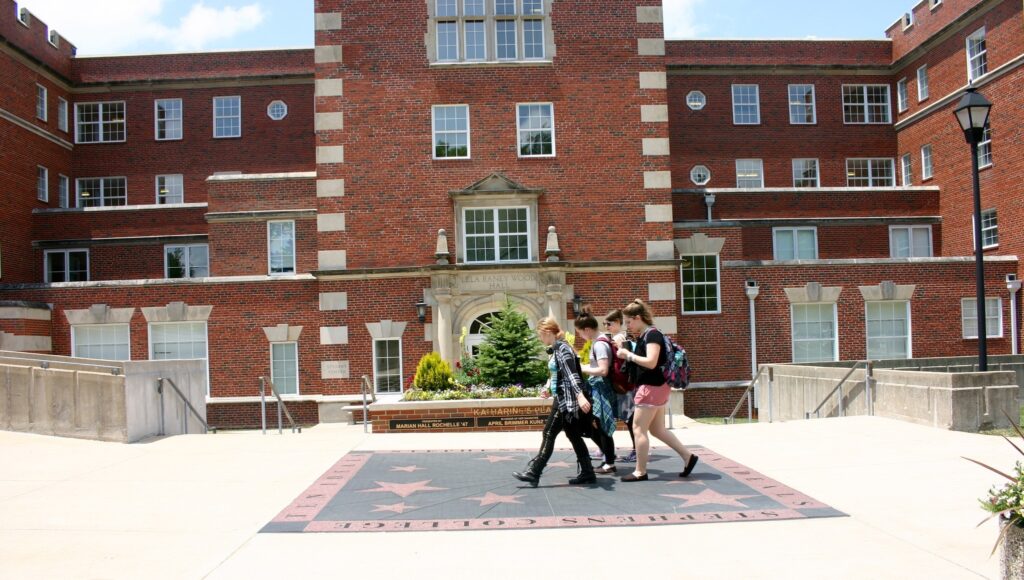
While UNCW seems wonderful, there are yet more schools that compete with it. Stephens College might be considered a hidden delight— often unheard of, but stuffed with opportunities. It is primarily a women’s-only college with the exception of a few of their programs. Established in 1833, the buildings still reflect that historical beauty throughout the campus. In addition, the school aims to be one of the most pet-friendly campuses in the country, right there in Columbia, Missouri. But for the writer, there are many more benefits.
Students can participate in Harbinger, Stephens’ literary publication, and the annual “Script Writers Showcase.” The college also hosts talented writers via their “Writers on the Edge” series. Recent guests have included Jill Orr and Laura McHugh, but other famous names top the list as well, such as Toni Morrison and Margaret Atwood. There’s also a spoken word troupe called “Poets of Infinity.” Stephens College puts on an historical costume exhibit in the spring, and creative writing students get to create flash fiction based on their imagination of the lives based on these costumes. What writer doesn’t love to imagine the possibilities, the past, and then bring that to life via the pen? With 67 credits in the major, students get the opportunity to truly hone in on their talents. And with a low student ratio of 8:1, students receive plenty of space and attention.
5. Truman State University
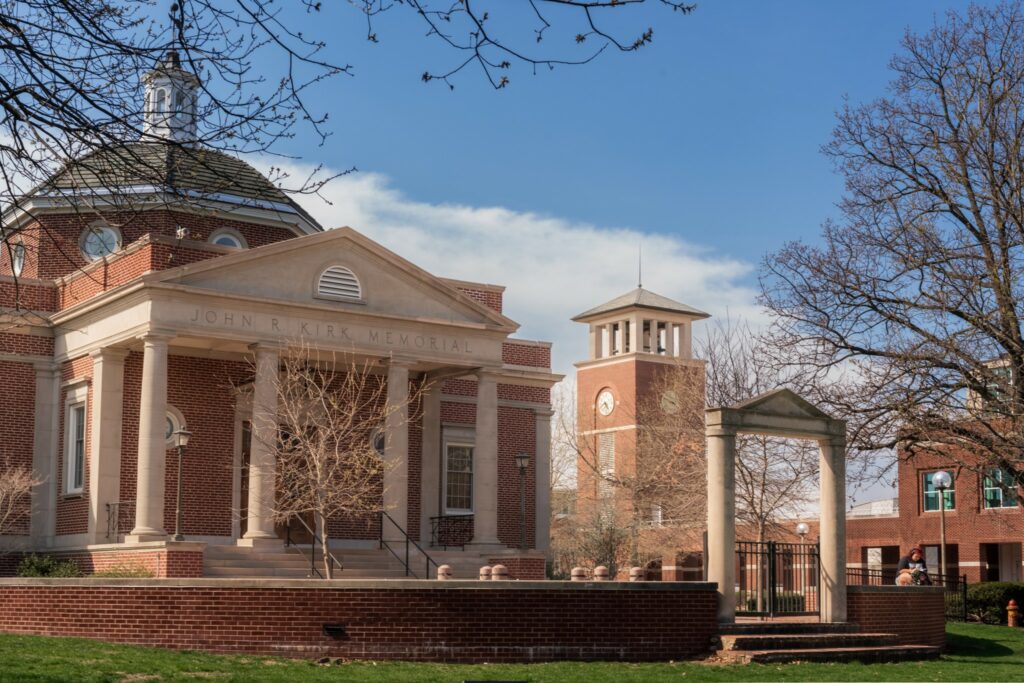
Stephens College is not the only school for those looking for a BFA in Creative Writing in Missouri. Truman State University also offers a BFA in Creative Writing located in Kirksville, Missouri. It is the least expensive college on this list at $17,532 for tuition annually. The university has several literary magazines that students can write or work for, including Windfall, The Green Hills Literary Lantern and Chariton Review. But the Truman Media Network also includes other student work opportunities, including the Index newspaper and a radio and TV news station. Truman really keeps students in the know.
“My favorite aspect of our program is how communicative and caring it is. When a student has a new publication, everyone in the BFA program is going to hear about it. When there are relevant events on campus, everyone is going to hear about it. And when there’s an opportunity like an internship or a conference coming up— you guessed it, everyone is going to hear about it! I just love that, it makes it feel like a real, tight-knit community,” Truman State University sophomore Celia Barbieri said.
Truman also hosts the “Ofstad Visiting Scholar Program” to provide both teaching programs and readings. One of the most recent visits was from Alexandra Rowland who spoke on magic systems in literature and her book “Running Close to the Wind.” Dr. Taylor Jones also spoke on “Linguistics, Culture, and Conflict.” Some unique classes at Truman present students with the opportunity to learn about mythology, folklore and much more. Amazing that a Midwest state could harbor two schools with BFAs in creative writing.
4. Bowling Green State University
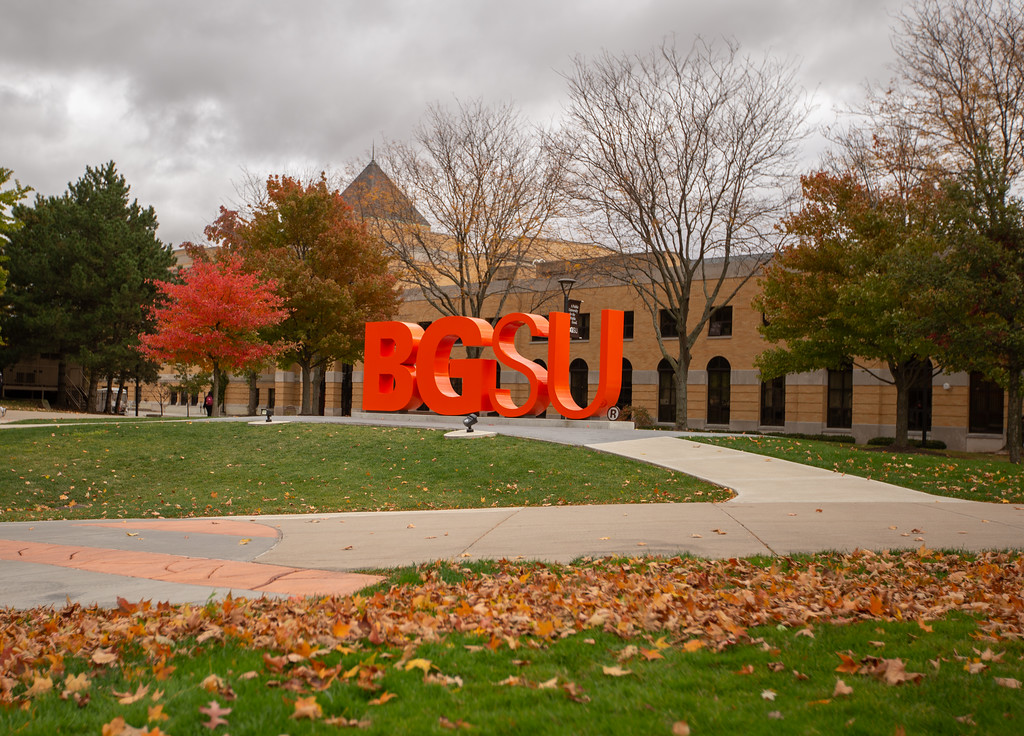
Bowling Green State University is next up. About 15 miles away from Toledo, Ohio, this campus blends the historical with the renovated and the modern. Students can work on staff for Prairie Margins or intern with the Mid-American Review. Students at Bowling Green are on a path to grow in their writing. Even their sample plan is laid out so students can bear in mind their mile markers, 1-16 until graduation.
“The BFA in Creative Writing at BGSU begins with four foundational courses, including Techniques of Fiction and Techniques of Poetry,” BSGU English and Creative Writing Professor Lawrence Coates said. “After completing these courses, students take small-group workshops, with options including the Graphic Novel along with fiction and poetry, culminating in a capstone thesis. All students are required to complete either an internship or a course in literary editing and publishing, to provide professional experience in related fields. BGSU also hosts a lively literary scene, with weekly readings, opportunities to work on the literary journals Prairie Margins and Mid American Review, and Winter Wheat Festival of Writing.”
The Winter Wheat Festival most recently occurred on Nov. 9-11 and consisted of workshops, keynote speakers, a book fair and over 40 workshops exploring a vast array of subjects. It featured workshops entitled, “Stories In Unexpected Packages: Mining The Mundane for Innovative Inspiration with Hannah Cajandig-Taylor,” “The Shapes of Our Stories with Joe Celizic” and “Micro-Fiction: Writing Windows Into Place and Time with Amanda Ellard.” Bowling Green presents students with a variety of ways to grow. One aspect of Bowling Green that sets it quite apart from other schools is its unique residential plan for their artists. Arts Village allows artists from various fields to both live and collaborate together. Some classes are even held at the village for convenience and to promote a sense of community within the village. Musicians, actors and writers can bounce creative ideas off of each other and live with one another.
3. Hamline University
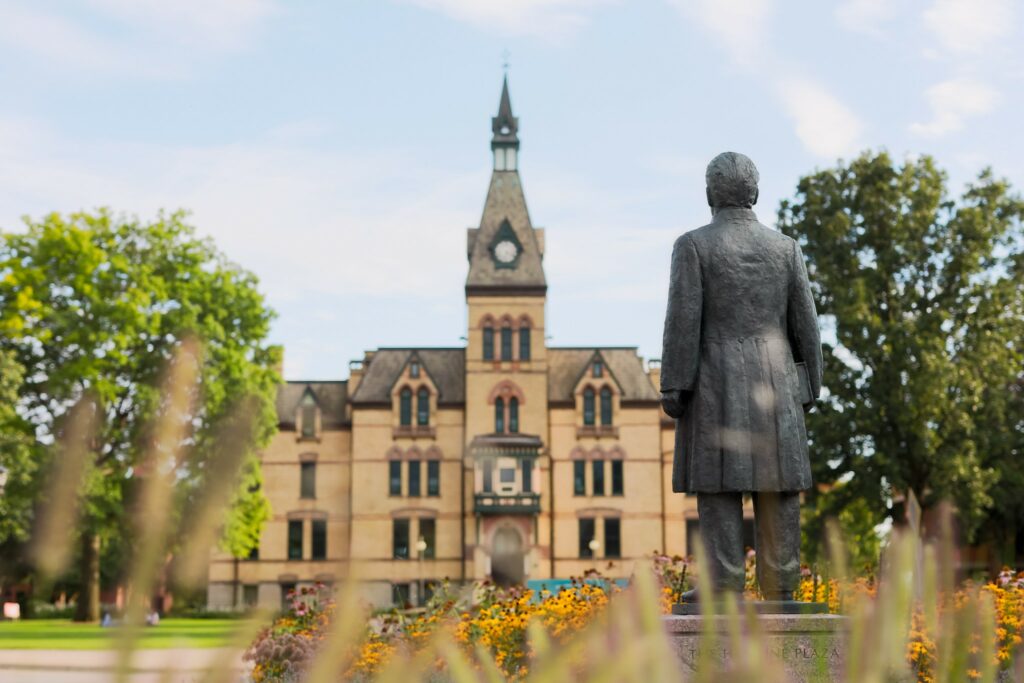
Heading up north to Saint Paul, Minnesota, we find another excellent school to obtain a BFA in creative writing. Hamline’s Old Main Hall is beautiful and the Giddens Learning Center that was funded by Andrew Carnegie pays credence to Hamline’s historical origins. There are a wealth of publications to choose from to gain experience and grow as a writer. The university has a student-led publication called the Fulcrum, which most recently published, “From the Dirt.” Hamline also has Untold Magazine, a lifestyle publication and The Oracle, a student newspaper about campus life. Hamline also produces Rock, Paper, Scissors and Runestone, the undergraduate publication that recently published, “Volume 9, Don’t Talk to Me about Runaway Bulls.” The university embraces the traditional forms of creative writing such as fiction and poetry, but also leans into digital storytelling, which can be greatly beneficial to a writer in this digitally-focused time.
2. Stephen F. Austin University
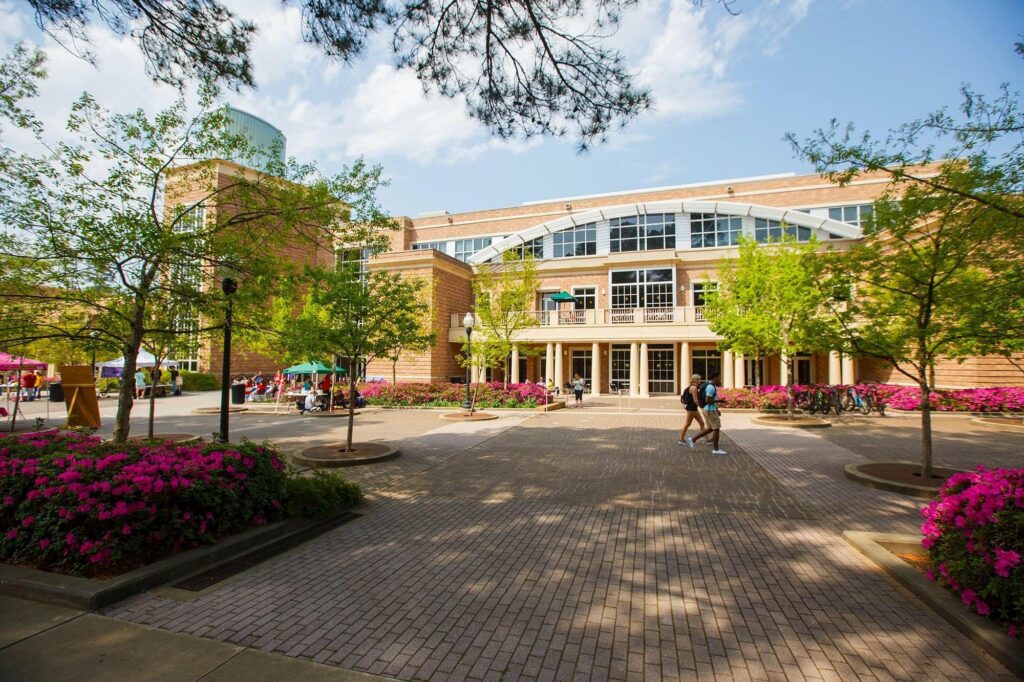
If you prefer warmer weather, consider Stephens F. Austin University located in Texas. With a great emphasis on nature and an abundance of gardens and walking trails, this campus alone creates a place of inspiration for students. But the campus isn’t the only reason that creatives go to Stephens F. Austin. What really drives students here is the preparation and experience they’ll have by graduation.
“I think what makes our program special is our heavy emphasis on the Senior Thesis, which is a two semester progression where students work on a substantial project of their own choice— a novel, a collection of stories or poetry, or creative nonfiction. It’s like a preview of a master’s level project,” Stephens F. Austin University English and Creative Writing professor John Mcdermott said.
Students also get the chance to work with HUMID, the student-run undergraduate literary magazine. Their most recent volume utilized the theme of coming of age through fiction, poetry, nonfiction, photography and art. Stephens F. Austin University even hosts a student-run creative writing club called Subplots, that gets students further plugged in and collaborating with one another. It is also on the lower side of the scale in terms of annual tuition cost at $23,200. With a great writing program and a unique mascot, you very well should consider becoming a Lumberjack.
1. Full Sail University
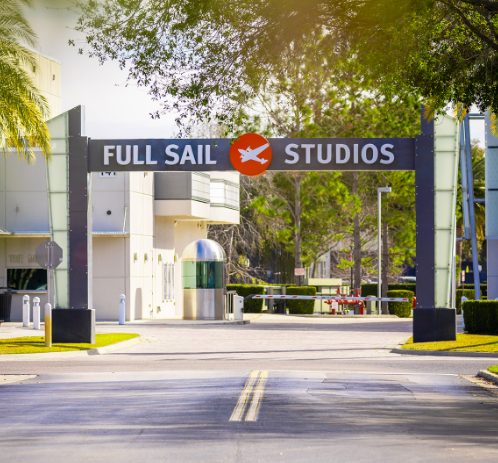
Last but far from least is our #1 ranked school on this list, Full Sail University. Located in Florida, this university is unique in so many ways. Full Sail breaks down their classes into 80 weeks or 20 months, an accelerated schedule to prepare students quickly while still achieving those 120 credit hours. The university has not just two yearly start dates, but monthly, making this program more flexible than other competitive programs. Plus, if you are in need of an online program, Full Sail’s BFA program in creative writing is set up to do just that without sacrificing quality or experience.
“Full Sail’s Creative Writing Bachelor of Fine Arts sets itself apart through its diversity of scope, skills acquired and industries served. Our students are educated to be traditional storytellers who create stories that live within a variety of mediums,” Full Sail University Program Director of Creative Writing Noelani Cornell said. “They are encouraged to submit flash fiction early in the program to gain confidence. The students then progress to writing within different genres, from comedy and tragedy to horror, mystery and suspense, then to science fiction and fantasy. After gaining some proficiency with the conventions of genre-writing, they progress into writing for different mediums. They learn to write for film, television (episodic and serial writing), games and interactive mediums and comics, as well as non-entertainment pursuits. While our students continue to hone their skills through character creation and development, genre and medium adaptions, they also learn how these skills can be tailored to work in diverse professional environments… They learn how writers must assess the skills they’ve developed in order to fulfill job requirements. At the beginning and end of Full Sail’s Creative Writing BFA, our main focus is to educate our students to become writers who are creative, adaptable and employable.”
In addition, Full Sail University has hosted a writing conference for the past four years via Zoom. The last conference held close to 30 workshops or sessions like “AI Text Generators – Apocalypse or Golden Age for Writers?”, ”What I Wish I Knew Before Self-Publishing” and “Crafting the Mystery Novel.” The only hitch might be that the university doesn’t have any on-campus housing, but there is a housing guide to assist students in finding housing off-campus. Full-Sail provides an innovative and exciting approach to creative writing.












